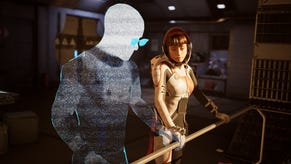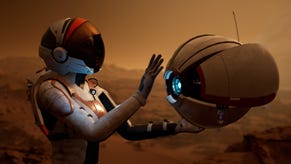Deliver Us Mars is exactly the kind of sci-fi Tomb Raider I can get behind
Space to breathe
I've known for a long time that becoming an astronaut was never going to be my life's calling. My eyesight's terrible, for one, and I guarantee I'd be vomming all over the walls if I was ever put inside one of those whirly burly machines to simulate the experience of launching into space. Indeed, if the two hours I spent playing Deliver Us Mars last week were anything to go by, I don't think I'd even make it through the doors at NASA. They'd take one look at me and turn me away on the spot, because man alive, even my fingers were aching after tackling a couple of different sections from early in the game's story.
There's a good reason for this, though, and it's one that actually enhanced my experience of the game as opposed to detracting from it. You see, while heroine Kathy might look like an auto-climbing Lara Croft-stronaut, with her pair of pickaxes dangling off her suit, in practice she's anything but. In fact, when she's climbing up and down walls, Kathy has more in common with Grow Home's little BUD bot than anyone else - albeit with a significantly higher polygon count. As she carries out her quest to look for tech to save Earth from an impending climate crisis, players manually control her climbing movements with pushes and squeezes of their right and left mouse buttons, plotting a course through the game's gnarled mess of girders and metallic bulkheads one axe stab at a time. It's a slow, but wonderfully tactile process, and it all adds up to launch Deliver Us Mars straight out of the trad, third-person action canon, and into the altogether starrier realms of platforming pioneers.
Of course, if you caught James' Deliver Us Mars Gamescom preview back in August, none of this will come as much of a surprise to you. In that earlier demo, Kathy's climbing was very much front and centre there as well, which left James similarly impressed despite some slightly stiff animations. I never saw that earlier build, so can't vouch for its technical quality, but there was certainly nothing during my preview session that gave me cause for concern. If nothing else, it proved that Keoken's decision to delay the game to February 2nd next year was the correct one.
Really, though, the meat of my demo was focused on Deliver Us Mars' puzzle solving, first in one of the early space stations Kathy encounters upon arriving on Mars, and later inside the innards of a wrecked satellite rocket teetering on the edge of large cliff face. As the sequel to Keoken Interactive's 2018 narrative platformer Deliver Us The Moon, Mars builds on a lot of the same puzzley foundations. In the first section, for example, I had to open a series of locked doors by firing a laser into a kind of cake-like electrical splitter, aiming the offshoots at the appropriate locks to power up the long-abandoned door frames. There was a strange, semi-transparent balloon-type object I could use to alter the strength of the laser, too, as some doors needed more power.
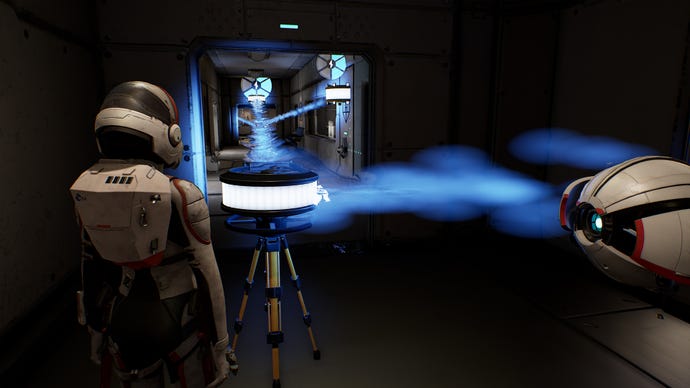
This trick was reprised in the second ship, only this time involving a lot more lasers and splitters to power up the satellite's control room. Kathy wasn't alone through all this, however. Much like the protagonist in Deliver Us The Moon, she's accompanied by a small aerial robot called Ayla on her journey to the red planet, who in another life could easily be the long-lost cousin of Wheatley from Portal 2, so similar are they in their overall design. Alas, Ayla clearly hasn't been programmed to deliver at least two quips per minute like her Portal counterpart - although given the current debate about chatty companions (lookin' at you, God Of War: Ragnarok), perhaps this is a blessing in disguise.
Still, even if all Ayla can muster is the occasional bleep and bloop, she sure is handy to have around. Indeed, while Kathy can do a bit of manual manoeuvring of her laser splitters on the ground, she can't jump with them or lift them to higher surfaces. Enter Ayla, who can easily levitate all manner of objects and plonk them down wherever they're needed - including some high-up platforms where multiple battery stations need their own respective power sources. Working together with Ayla to get everything in position was key to solving this second major puzzle, and it felt like a satisfying evolution of the one I'd solved earlier. If Keoken can keep building on their puzzles like this further down the line in Deliver Us Mars, it could end up quite the pleasing brain teaser (although I'll need a bit more variety than just lasers and splitters - there's only so many of those they can throw at me before it starts to get a bit rote).
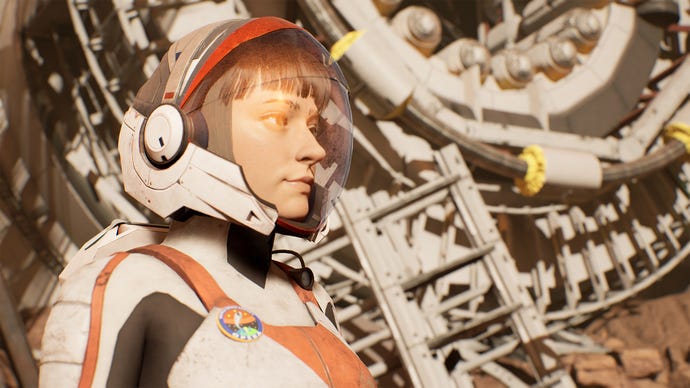
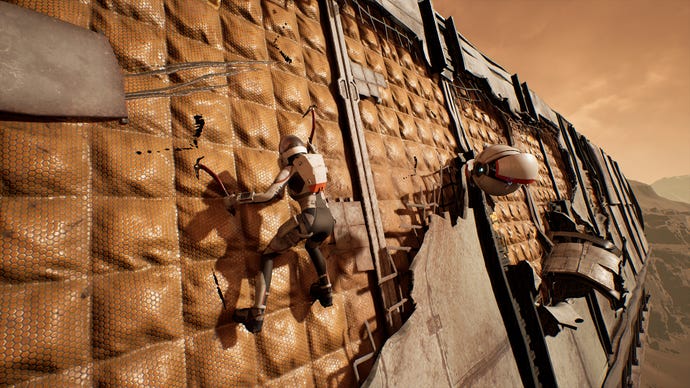
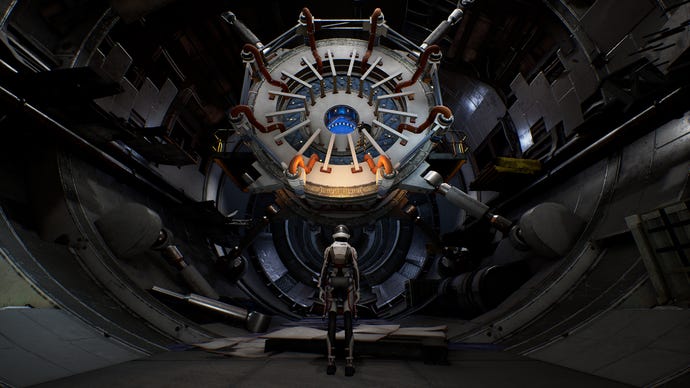
Ayla's good for more than just being a laser splitter pack horse, though. Given her dinkier proportions compared to Kathy, she can also morph ball it through sneaky vents and passageways to get into rooms Kathy can't, so you'll need to be on the lookout for these as you progress. But whereas other third person games would simply have you tap a button in these cases to let your AI companion do it all for you (*cough*God Of War again*cough*), Deliver Us Mars puts you in direct control of Ayla's movements, allowing you to pilot her in first-person with a tap of the C button. Again, this isn't all that dissimilar from Deliver Us The Moon, nor is it that revolutionary in isolation. But in an age where so much third-person puzzle solving is becoming increasingly automated these days, it just feels refreshing to actually do it all yourself for once, you know?
That said, I'm sure there will still be a handful of people who yearn for that sense of automatic ease, particularly when it comes to Deliver Us Mars' hairy cinematic platforming segments. In my demo, this came during a very tense climb along one of the satellite rocket's crumbling inner walls. I'm not gonna lie, my stomach always does a bit of a flipflop when floors fall away and you're suddenly travelling upwards rather than forwards in a game, especially if the thing you're climbing up is also in the process of breaking apart into a hundred tiny pieces. But having to do all that while seesawing my fingers on my mouse to hold Kathy in place so she doesn't plummet down the cliff face below? That's proper seat of the pants stuff, especially when your ears are also being bombarded by the sound of wrenching metal and ominous mechanical groans. Again, though, it's the thrill of having full control that makes this sequence so tense, and I think much would be lost if all I was doing was waggling an analogue stick for some auto-jump action.
So yes, I ended up stretching a lot of muscles in my hand I didn't even know I had while playing Deliver Us Mars, but I also wouldn't trade those aches for anything. It felt good to be wholly invested in what I was doing and to have the creaking joints to show for it afterwards, and I only hope the rest of Deliver Us Mars makes good on the foundations Keoken have set down here during the rest of its story. If nothing else, the delay until February 2nd 2023 should hopefully give me enough time to establish a proper exercise routine for my wasted ligaments, as I'd like to be in peak condition to see if it really can, err, deliver on what I've seen so far.



